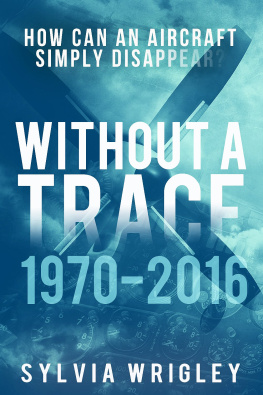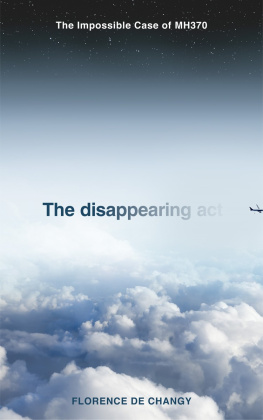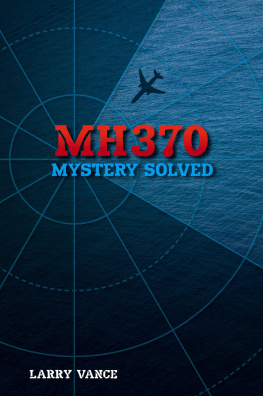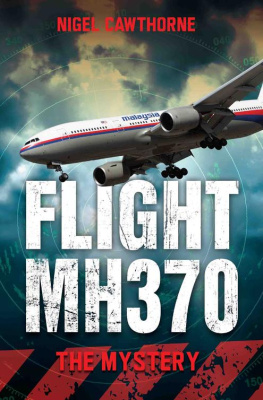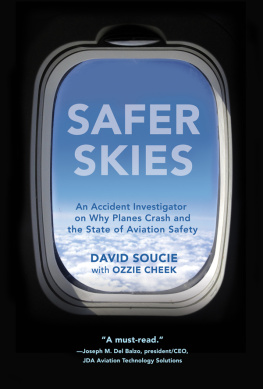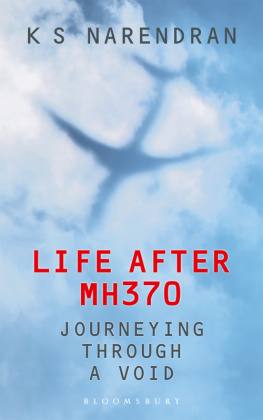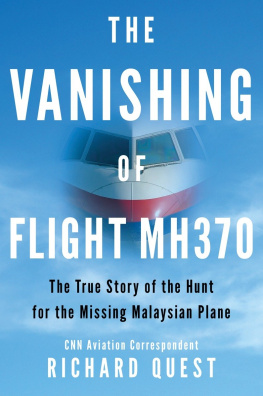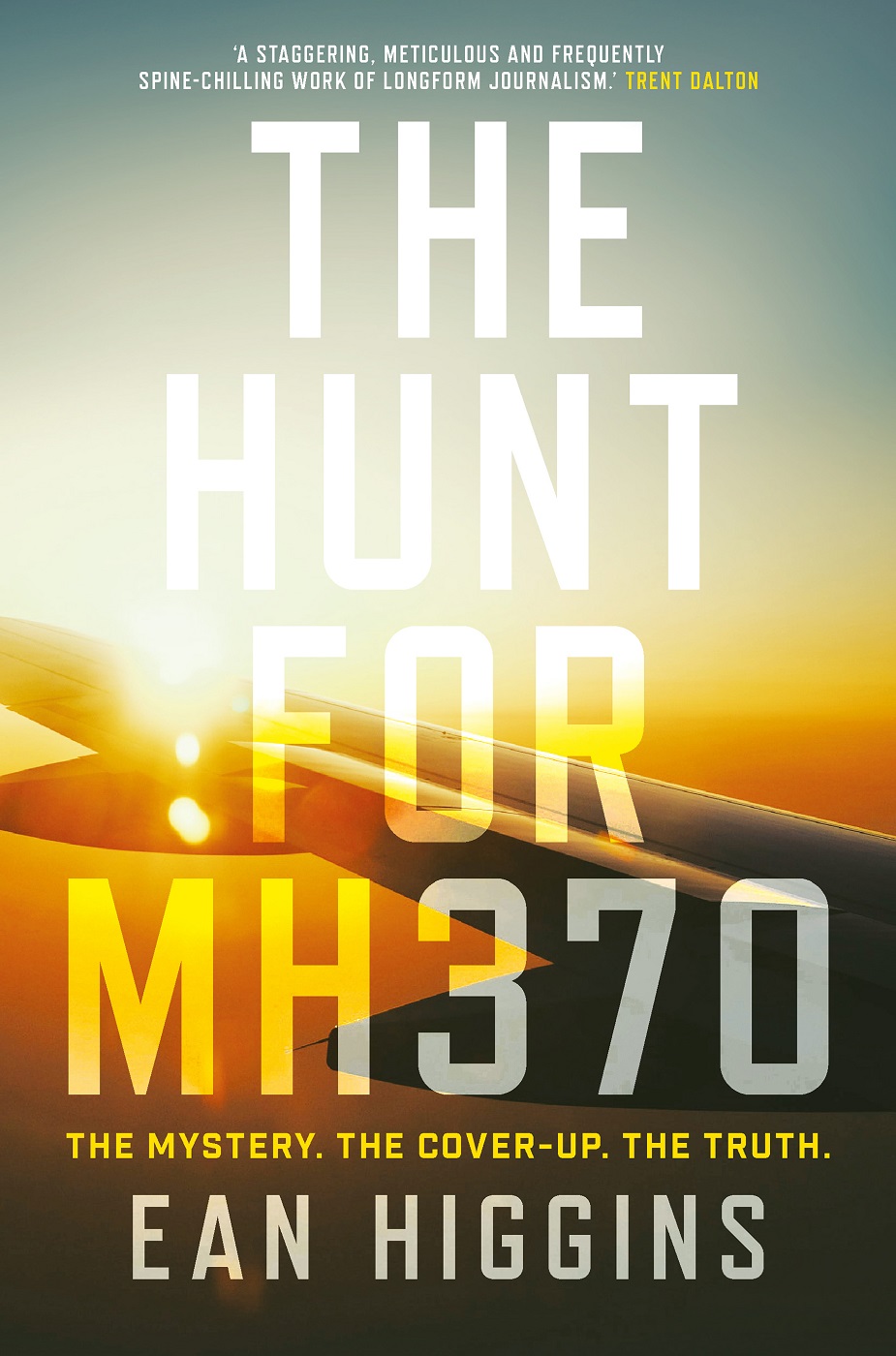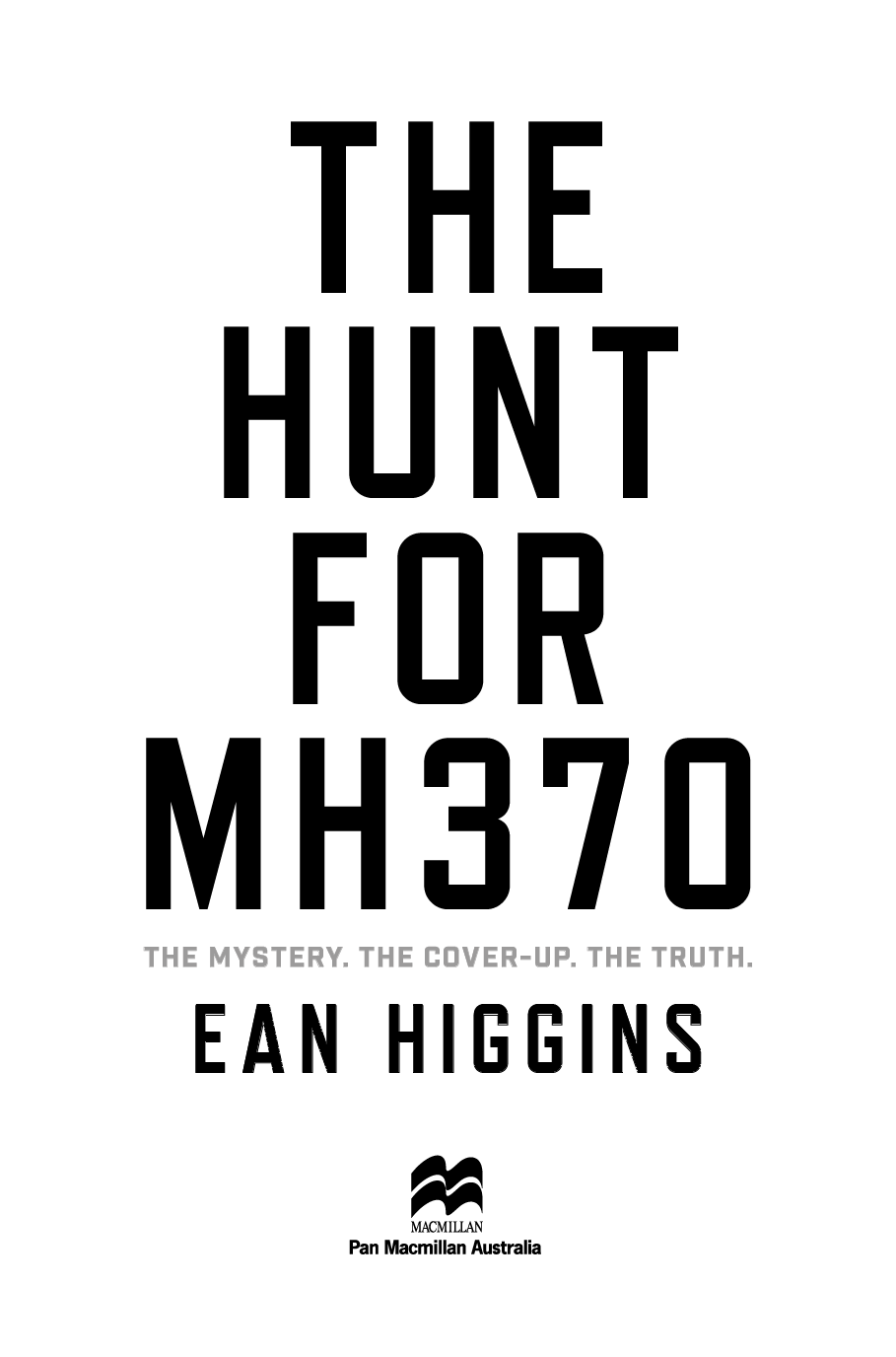About The Hunt for MH370
A staggering, meticulous and frequently spine-chilling work of longform journalism. Trent Dalton
Somewhere deep beneath the wild seas of the southern Indian Ocean, perhaps in the eerie underwater canyons of Broken Ridge along the Seventh Arc satellite band, lies the answer to the worlds greatest aviation mystery.
Why, on the night of 8 March 2014, did Malaysia Airlines Flight MH370 suddenly U-turn, zig-zag up the Straits of Malacca, then vanish with 239 souls on board?
Was it an elaborate murder-suicide by a rogue pilot? A terrible accident such as onboard fire, rapid decompression or systems failure? A terrorist hijacking gone wrong? Or something else entirely?
Award-winning journalist Ean Higgins has led the world medias coverage of this incredible saga and draws on years of interviews with aviation experts, victims families, air crash investigators and professional hunters across land, sea and sky to dissect the riddle of MH370s fate.
To those who hunt for MH370 including the families
of the disappeared whose quest continues.
Contents
PROLOGUE
Somewhere out in the southern Indian Ocean, maybe in one of the underwater canyons of Broken Ridge but beyond the Seventh Arc, lies the answer to the worlds greatest aviation mystery.
Malaysia Airlines Flight MH370 was on its way from Kuala Lumpur to Beijing when some very strange things happened on the Boeing 777. They caused a pilot to turn around, fly a zigzag course back over Malaysia, up the Straits of Malacca, then south to vanish literally in the middle of nowhere, all without a word from anyone on board.
Five years after it disappeared, the aircraft is still there, probably in very deep and cold water, well preserved along with the 239 souls, but just not yet found. Once it is discovered and most aviation experts believe it will be one day the mystery can be solved. The flight data recorder, the cockpit voice recorder, the identity and disposition of anyone in the cockpit at the controls, the configuration and nature of damage to the different parts of the aircraft, and, macabre though it is, the pathology of those on board, will provide the clues.
We will learn why the aircraft turned around about 40 minutes into the flight. We will glean insight as to why at that time the secondary radar transponder was turned off, the aircraft flew a deliberate route back over Malaysia roughly following the Malaysia-Thailand airspace border, over Penang, then north-west, and finally on the long track south.
Over the years since MH370 went missing on 8 March 2014, there has been no shortage of speculation about what happened some theories wild and outlandish, some well informed and within the realms of the possible. Some believe it may have been a hijacking gone wrong. Others think there may have been a fire on board, possibly caused by the combination of cargo including lithium-ion batteries and a massive supply of the tropical fruit mangosteens, which have a hard, deep-purple casing outside, and inside succulent white segments which are little explosions of sweet delight.
There are those who look at accidental depressurisation, in which the pilots became a bit hypoxic, or light-headed because of a faulty oxygen supply not enough to pass out, but enough to make silly and illogical decisions and fly the aircraft in a strange way. Its happened before some air accidents have been recorded where the pilot is conscious but drunkenly happy with the reduced amount of oxygen.
Then there are the more extreme theories: that a rogue nation such as North Korea hacked into the aircrafts control systems and electronically captured it, perhaps making use, ironically, of a new remote system said to be designed to counteract a hijack. Even more out there, something like a scene from the old US television series The Twilight Zone , some suggest MH370 was taken over by aliens.
Others, including some families of the Chinese passengers on the flight, say the official interpretation of the direction the aircraft took on the last leg is wrong, and it was in fact hijacked and flown north-west over the Maldives to central Asia and landed at an Islamic rebel airbase, its passengers and crew still held hostage to this day.
And there is one theory that the captain, his marriage having collapsed, took a parachute on board in his flight crew bag, and depressurised the aircraft to kill all else on board. He then set the aircraft on a course on automatic pilot, bailed out, and was picked up in a boat by his mistress. He and the mistress, so promoters of this theory say, are living happily under new, stolen identities in another country, maybe Australia.
Most professionals in the aviation business, though, believe the evidence best points to the flights captain, Zaharie Ahmad Shah, having hijacked his own aircraft in a complex and cunning act of mass murder-suicide. The only debate there is whether, as the Australian Transport Safety Bureau (ATSB) maintains, MH370 was a ghost flight by the end, flying on autopilot with no-one conscious, and crashing down rapidly after fuel exhaustion. Or did Zaharie fly the aircraft to the end, making a controlled ditching to try to keep as much of MH370 intact as possible and sink it with a minimal debris field?
If the ATSB had worked on the premise that a pilot flew the aircraft to the end, they would effectively have had to say they believed MH370 was most likely hijacked by its captain, Zaharie. By saying instead, as they did, that MH370 had an unresponsive crew and was not controlled by a pilot at the end, they could avoid making such a call publicly whatever they themselves thought had happened earlier in the flight.
Many veteran airline captains and top air crash investigators suspect the ATSB, even if subconsciously, came up with what became known as their ghost flight and death dive theory to avoid having to publicly embarrass the Malaysian government and its government-owned national flag carrier airline.
Did the ATSB, even without realising it, look for anything that might support a theory which would mean they would not have to say a trusted Malaysian pilot hijacked his own aircraft and took himself and 238 innocent people from around the world to their deaths? Did they, again subconsciously, read that bias into the later evidence as it came in, including when parts of the aircraft washed up on the other side of the Indian Ocean which many experts believe point to a controlled ditching?
The ATSB says, emphatically, no: the bureaus officers have told Senate Estimates they worked objectively on facts, science and logic, consulting the best Australian and overseas experts in the field to establish their target search area, without bias or subjective influences.
The debate is not academic; it has a fundamental impact on working out where the aircraft might be, and where to look. If the ATSB is right, the aircraft came pretty much straight down after it ran out of fuel, producing a relatively narrow search zone. If Zaharie flew the aircraft to the end and ditched it, either under power or gliding it after it ran out of fuel, he could have taken it a much longer distance, perhaps 100 nautical miles or more according to the ATSB, and well outside the search area the bureau defined. In that case, the ATSB-led undersea hunt never had a serious chance of success, and it blew almost $200 million of Australian, Malaysian and Chinese taxpayers money on what was always going to be a lost cause.
In my efforts to get to the truth of MH370 as a reporter for The Australian , the ATSB, and the federal governments Joint Agency Coordination Centre (JACC), which was set up to orchestrate the MH370 search, engaged in some repressive media practices not usually consistent with public sector agencies in a democracy. They tried to have me taken off the story for persisting with questions they didnt want to answer, an attempt the editors rejected as an unacceptable bid by a government agency to undermine their independent authority and hobble freedom of the press. Eventually, as it became more desperate to suppress The Australian s reportage of criticism of its search strategy, the ATSB hired a top law firm to issue warnings to the editors to refrain from its style of coverage warnings the editors tossed aside and exposed.


